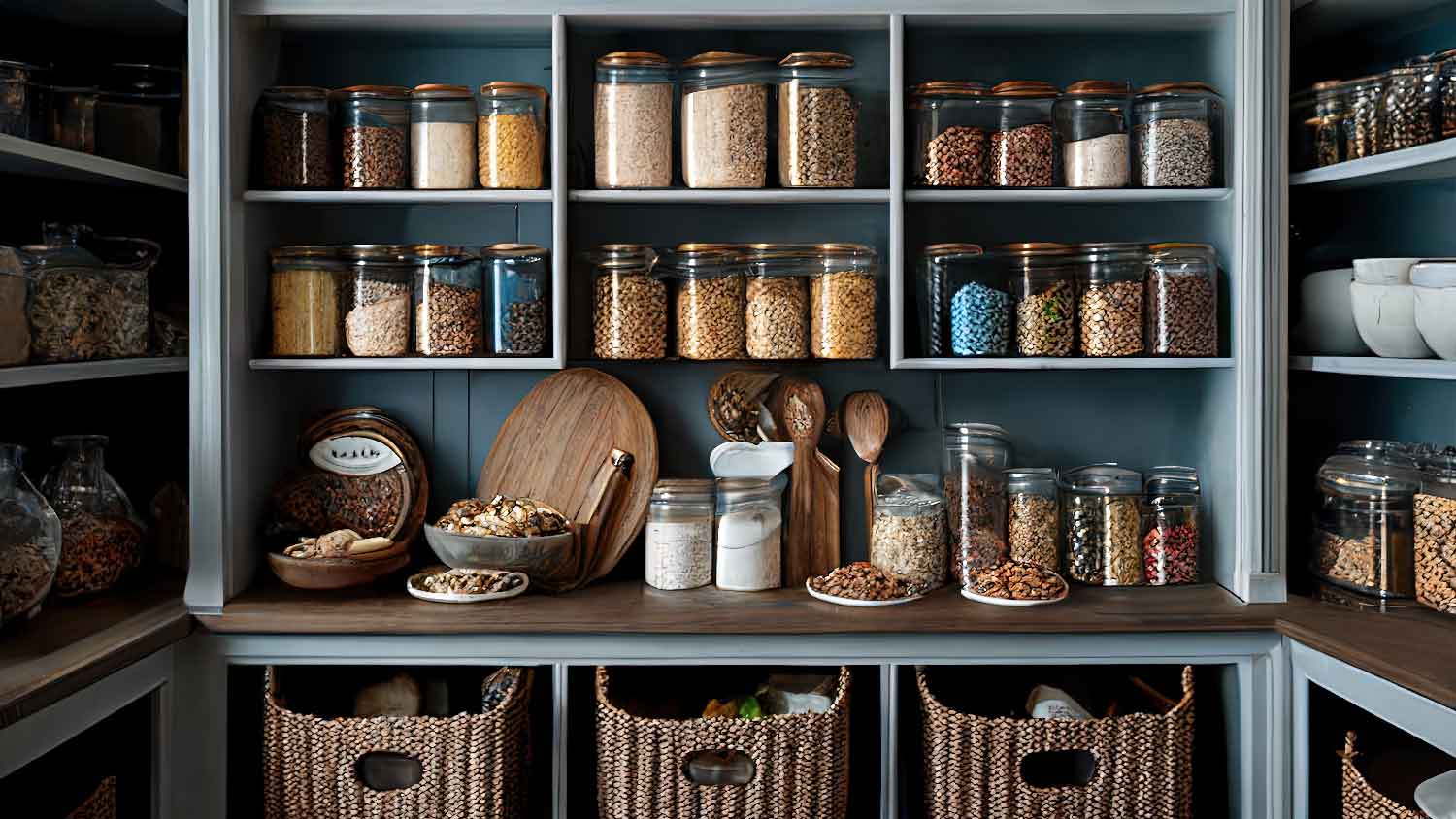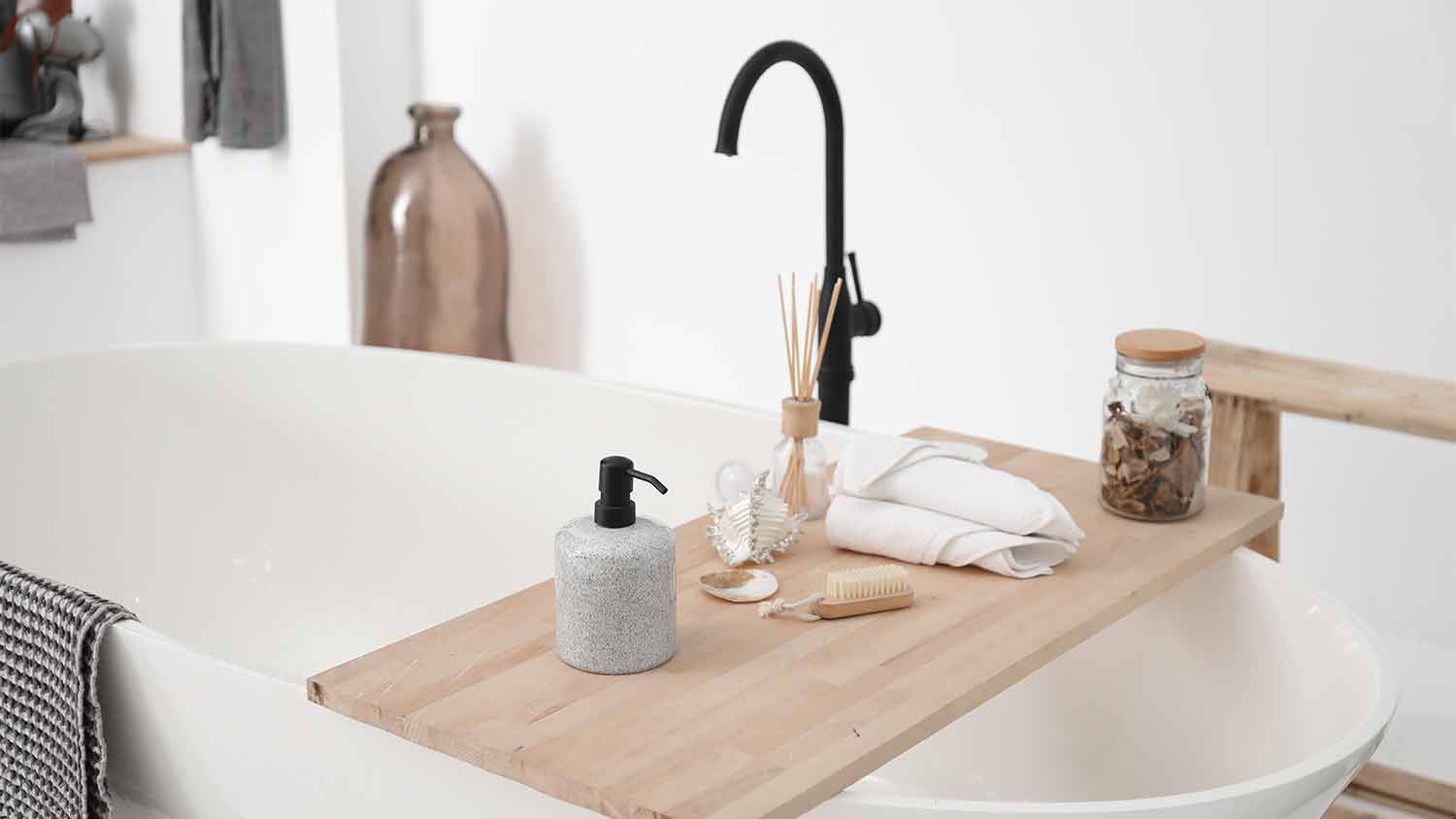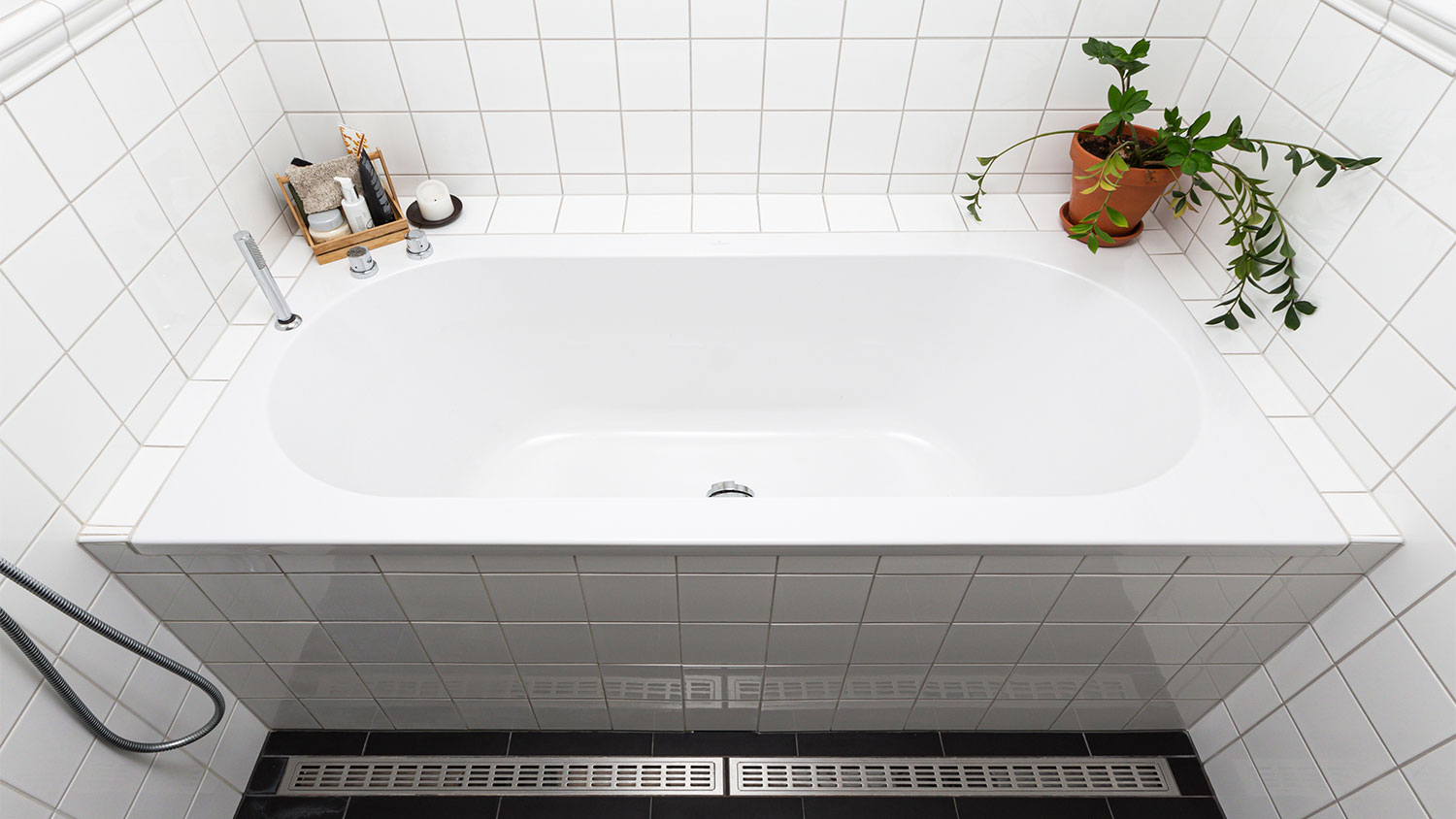
A bidet—stand-alone, attachment, spray nozzle, or toilet combo—reduces toilet paper usage and saves money, but how much is a bidet? Here’s how much you’ll pay.
Meet your food storage needs


A functional kitchen requires a myriad of ingredients and supplies, but that comes with a need for storage space. Luckily, kitchen pantries bring efficiency and order to the culinary chaos. If you're trying to determine the type of pantry that suits your needs and layout, we've rounded up exactly what you need to know to make the best decision for your kitchen storage.
A built-in pantry is integrated into the kitchen cabinetry and often features pull-out shelves or drawers for organization. The design keeps the pantry neatly tucked away behind cabinet doors for a clutter-free appearance. Built-in pantry designs not only optimize kitchen functionality but also enhance the overall aesthetic appeal by seamlessly blending with the surrounding cabinetry and decor.
| Pros | Cons |
|---|---|
| Customization | Cost |
| Optimizes space | May have limited accessibility |
| Aesthetically appealing | Challenging to maintain |
Best for: Homeowners looking to achieve a seamless and cohesive look in their kitchen.
A butler's pantry is located adjacent to the kitchen and serves as a practical area for food preparation, staging, and storage. This type of pantry allows for seamless entertaining and dining experiences. Butler's pantries traditionally feature countertops, cabinets, and shelving for storing dishes, glassware, and linens, as well as appliances like microwaves or wine coolers. This space offers a level of convenience and organization during meal service, enabling hosts to keep the kitchen clutter-free while maintaining easy access to necessary items for serving and entertaining guests.
| Pros | Cons |
|---|---|
| Enhanced entertaining | Requires additional square footage |
| Additional storage | High cost |
| Increases home value | Design challenges |
Best for: Homeowners who frequently host gatherings, dinner parties, or formal events.

A closet pantry is a compact storage solution often located within a dedicated closet space in or near the kitchen area of a home. These pantries have shelves or racks designed to maximize storage capacity for food items, kitchen supplies, and household essentials. While smaller than walk-in or built-in pantries, closet pantries offer efficient organization and easy access.
| Pros | Cons |
|---|---|
| Cost-effective | Potential for clutter |
| Space-saving | Limited storage capacity |
| Easily accessible | Lack of customization |
Best for: Apartment residents, small households, or homes with a compact kitchen.
Corner pantries are designed to maximize space efficiency by using the often-underutilized corner areas of a kitchen. Typically built into the corner of the room, these pantries feature shelving, racks, and storage compartments that make the most of vertical space while offering easy access to pantry items. Corner pantries are particularly advantageous in kitchens with limited square footage, as they optimize storage capacity without encroaching on valuable floor space.
| Pros | Cons |
|---|---|
| Efficient use of space | Design limitations |
| Easily accessible | May be aesthetically unappealing |
| Increased visibility to items | Challenging installation |
Best for: Kitchens with limited square footage.
Freestanding pantries are standalone units designed to provide additional storage space. Unlike built-in or cabinet pantries, freestanding pantries can be moved and placed anywhere in the kitchen or adjacent areas, offering flexibility in terms of layout and design. These pantries often feature shelves, drawers, and compartments for organizing various pantry items. Freestanding pantries come in several styles and sizes, ranging from compact cabinets to larger armoire-like structures, catering to different storage needs and kitchen configurations.
| Pros | Cons |
|---|---|
| Affordable | Requires floor space |
| Easy to install | May lack stability |
| Increases organization | Limited customization |
Best for: Budget-conscious homeowners with storage needs.
Slide-out pantries, also known as pull-out or roll-out pantries, feature shelves or racks mounted on rails or slides, allowing them to be pulled out from the cabinet or wall-mounted unit for easy access to stored items. Slide-out pantries are installed in narrow spaces between cabinets or appliances, utilizing otherwise unused areas and providing additional storage without taking up valuable floor space. They are ideal for organizing pantry items such as canned goods, spices, and condiments.
| Pros | Cons |
|---|---|
| Space-efficient | Higher cost |
| Convenient access | Difficult to maintain |
| Customizable | Weight limitations |
Best for: Small kitchens or apartments with limited space and narrow gaps between cabinets.
Walk-in pantries are spacious storage areas located adjacent to the kitchen, offering ample room for storing pantry items. These pantries are characterized by their larger size, with shelves, cabinets, and storage solutions. The difference between a walk-in pantry vs. a butler's pantry is that the latter is much more spacious and doubles as a food prep space. Walk-in pantries provide easy access to stored items, with enough space for users to walk in and browse shelves. They are particularly beneficial for homeowners who require extensive storage space or who prefer to keep their kitchen counters and cabinets free from clutter.
| Pros | Cons |
|---|---|
| Ample storage space | Requires square footage |
| Increased home value | High cost |
| Enhanced kitchen functionality | Potential for overstocking |
Best for: Households with large families.
Wall pantries are compact storage solutions designed to maximize vertical space in the kitchen by utilizing wall-mounted cabinets or shelving units. These pantries are installed on an empty wall in the kitchen and come in various sizes and configurations to accommodate different kitchen layouts. They are particularly beneficial for small kitchens or apartments with limited floor space, as they optimize storage without sacrificing valuable square footage. With shelves or cabinets mounted at eye level, wall pantries offer easy access to stored items.
| Pros | Cons |
|---|---|
| Space-efficient | Weight limitations |
| Easily accessible | Complex installation |
| Customizable | Limited storage capacity |
Best for: Small apartments or compact kitchens with limited floor space and empty wall space.
When selecting the ideal type of pantry, assess your kitchen's available floor space and vertical clearance. Small kitchens may benefit from space-saving options like wall-mounted or slide-out pantries, while larger kitchens with plenty of square footage can accommodate walk-in or built-in pantry dimensions.
Also, consider your storage and organizational needs. If you want to store bulk items or enjoy a well-organized pantry, opt for pantries with adjustable shelving or compartments that can be tailored to your specific needs.
You should also reflect on your aesthetic preferences and how the pantry will complement your kitchen's overall design. Whether you enjoy sleek modernity or rustic charm, select a pantry style that harmonizes with your kitchen decor.
Finally, your budget will play a big role in your decision. The average cost to build a pantry ranges between $1,100 and $2,900. While you may be able to DIY install a freestanding pantry or convert a closet pantry, more extensive projects for a walk-in pantry would require hiring a local kitchen designer to make your pantry vision a reality.
From average costs to expert advice, get all the answers you need to get your job done.

A bidet—stand-alone, attachment, spray nozzle, or toilet combo—reduces toilet paper usage and saves money, but how much is a bidet? Here’s how much you’ll pay.

An in-law suite can add value to your home and provide space for additional family members. Use this guide to get an idea of how much it will cost to build an in-law suite.

Accurately plan your project budget with this kitchenette cost breakdown and know where to save or splurge. Here are key factors for how much it costs to install a kitchenette.

Looking for a place to start with your garage remodel? Look no further, because with this guide, you’ll learn six great budget-friendly garage remodel ideas that will turn your garage into one of your favorite spots in the home.

An updated bathtub can give a bathroom a whole new look. Find out how much it costs to replace a bathtub in St. Louis, MO, including prices by type and labor costs.

An updated bathtub can give a bathroom a whole new look. Find out how much it costs to replace a bathtub in Washington, D.C., including prices by type and labor costs.